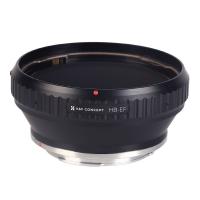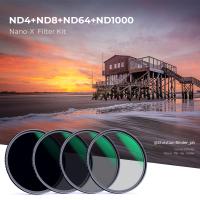Can We See Atoms With Microscope ?
No, atoms cannot be seen with a traditional light microscope due to their extremely small size. The resolution of a light microscope is limited by the wavelength of visible light, which is much larger than the size of an atom. However, there are specialized microscopes such as scanning tunneling microscopes and atomic force microscopes that can visualize atoms by using different techniques. These microscopes work by scanning a tiny probe over the surface of a sample and measuring the interactions between the probe and the atoms. This allows for the creation of high-resolution images that reveal the atomic structure of the sample.
1、 Atomic Force Microscopy: Visualizing atoms using a specialized microscope.
Yes, we can see atoms with a microscope, specifically with a specialized type of microscope called Atomic Force Microscopy (AFM). AFM is a powerful tool that allows scientists to visualize and manipulate individual atoms and molecules.
AFM works by using a tiny probe, typically a sharp tip at the end of a cantilever, to scan the surface of a sample. As the probe moves across the surface, it interacts with the atoms and molecules present, creating a topographic map of the sample. By measuring the forces between the probe and the atoms, AFM can provide high-resolution images of individual atoms.
The development of AFM has revolutionized our understanding of the nanoscale world. It has allowed scientists to observe and study the properties and behavior of atoms and molecules in real-time. AFM has been used to investigate a wide range of materials, including metals, semiconductors, polymers, and biological samples.
It is important to note that AFM does not directly "see" atoms in the traditional sense of optical microscopy. Instead, it detects the forces between the probe and the atoms to create an image. This technique has its limitations, such as the need for a conductive or reflective surface and the inability to visualize atoms in a vacuum. However, AFM has provided invaluable insights into the atomic world and continues to be a vital tool in nanoscience and nanotechnology research.
In conclusion, Atomic Force Microscopy is a specialized microscope that allows us to visualize atoms and molecules. While it does not directly "see" atoms in the traditional sense, it provides high-resolution images by detecting the forces between the probe and the atoms. AFM has greatly advanced our understanding of the nanoscale world and continues to be a valuable tool in scientific research.

2、 Scanning Tunneling Microscopy: Imaging atoms through electron tunneling.
No, we cannot see atoms with a traditional light microscope. The resolution of a light microscope is limited by the wavelength of visible light, which is around 400-700 nanometers. Since atoms are much smaller than this, they cannot be directly observed using a light microscope.
However, there are specialized microscopes that can image atoms. One such microscope is the Scanning Tunneling Microscope (STM). STM works on the principle of electron tunneling, where a sharp tip is brought very close to the surface of a sample. A small voltage is applied between the tip and the sample, causing electrons to tunnel between them. By measuring the tunneling current, a three-dimensional image of the surface can be created, revealing the positions of individual atoms.
STM has revolutionized our understanding of atomic-scale structures and has been instrumental in various fields of science, including physics, chemistry, and materials science. It has allowed scientists to directly observe and manipulate individual atoms and molecules, leading to breakthroughs in nanotechnology and the development of new materials.
The latest point of view is that STM continues to be a powerful tool for atomic-scale imaging. However, it does have limitations. STM can only image conductive surfaces and requires a vacuum environment. Additionally, the tip-sample interaction can sometimes cause damage to the sample. To overcome these limitations, new techniques such as Atomic Force Microscopy (AFM) have been developed, which can image non-conductive surfaces and operate in ambient conditions.
In conclusion, while we cannot see atoms with a traditional light microscope, the development of specialized microscopes like STM has allowed us to image atoms through electron tunneling. These techniques have greatly advanced our understanding of the atomic world and continue to be valuable tools in scientific research.

3、 Transmission Electron Microscopy: Capturing atomic-scale images using electron beams.
No, we cannot see individual atoms with a conventional light microscope. The resolution of a light microscope is limited by the wavelength of visible light, which is about 500 nanometers. Since atoms are much smaller than this, they cannot be directly observed using visible light.
However, with the advent of Transmission Electron Microscopy (TEM), it is now possible to capture atomic-scale images using electron beams. TEM works by passing a beam of electrons through a thin sample, which interacts with the atoms in the sample and produces an image on a fluorescent screen or a digital detector.
The resolution of TEM is much higher than that of a light microscope, with the ability to resolve individual atoms and even atomic structures. This is because the wavelength of electrons is much smaller than that of visible light, allowing for higher resolution imaging.
In recent years, advancements in TEM technology have further improved its capabilities. For example, aberration correction techniques have been developed, which minimize the distortions caused by the electron lenses, resulting in even sharper and more detailed images. Additionally, the development of environmental TEM allows for the observation of materials under realistic conditions, such as in a gas or liquid environment.
Overall, Transmission Electron Microscopy has revolutionized our ability to visualize and understand the atomic world. It has become an indispensable tool in various fields of science, including materials science, nanotechnology, and biology, enabling researchers to study and manipulate matter at the atomic scale.

4、 Scanning Electron Microscopy: Revealing atomic details through electron scanning.
No, we cannot see individual atoms with a traditional light microscope. The resolution of a light microscope is limited by the wavelength of visible light, which is about 500 nanometers. Since atoms are much smaller than this, they cannot be directly observed using a light microscope.
However, with the advent of advanced imaging techniques such as Scanning Electron Microscopy (SEM), it is now possible to reveal atomic details. SEM uses a focused beam of electrons instead of light to image the sample. The electrons interact with the atoms in the sample, producing signals that can be detected and used to create an image.
In SEM, a sample is coated with a thin layer of conductive material to enhance the electron signals. The electron beam scans across the surface of the sample, and the signals emitted from the interaction between the electrons and the atoms are collected and processed to generate an image. The resolution of SEM can be as high as a few nanometers, allowing us to observe the atomic structure of materials.
It is important to note that while SEM can reveal atomic details, it does not directly visualize individual atoms. Instead, it provides information about the surface topography and composition of the sample at a very high resolution. To visualize individual atoms, more advanced techniques such as transmission electron microscopy (TEM) or scanning tunneling microscopy (STM) are required.
In summary, while we cannot see individual atoms with a traditional light microscope, Scanning Electron Microscopy has revolutionized our ability to reveal atomic details and study the nanoscale world.






























There are no comments for this blog.